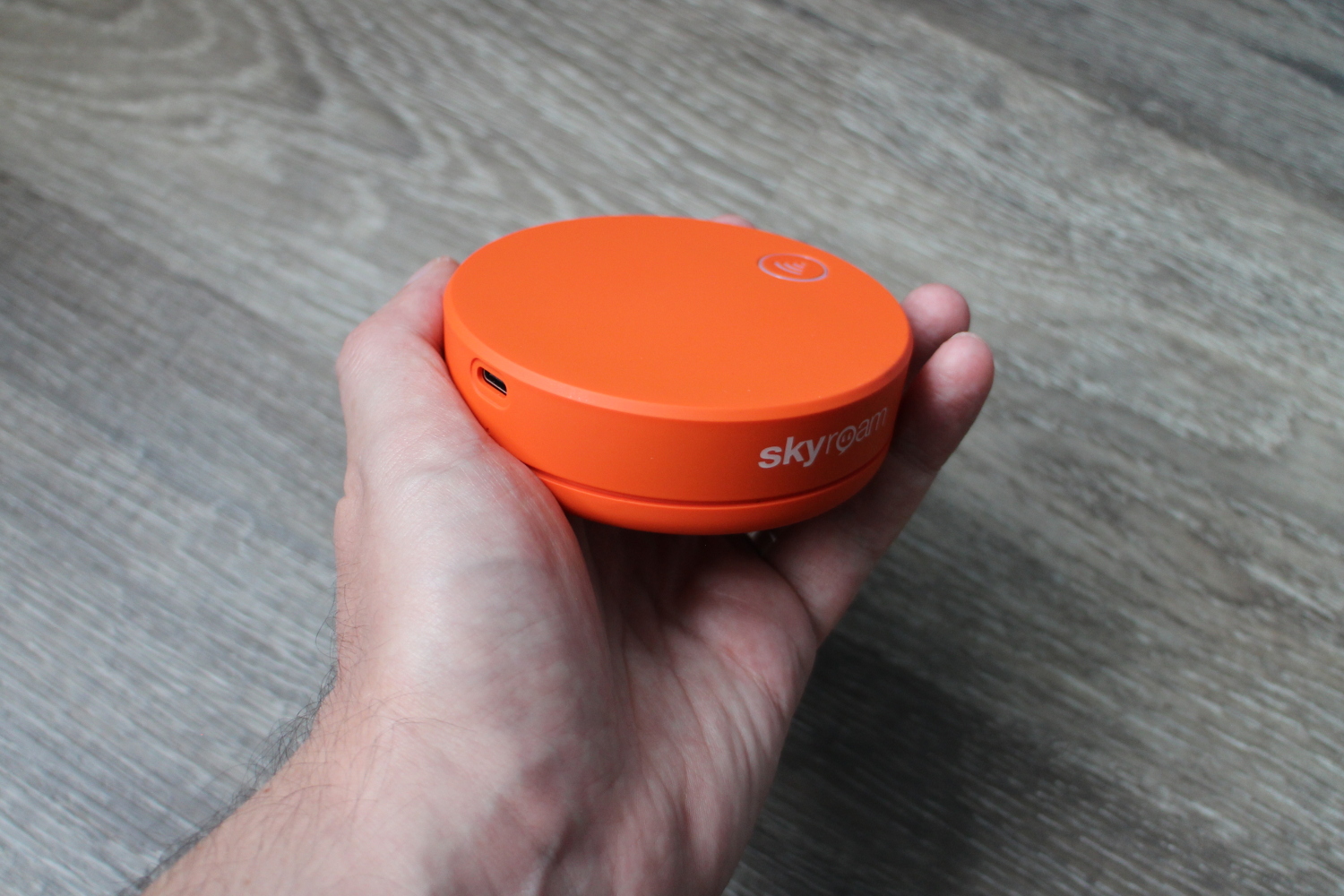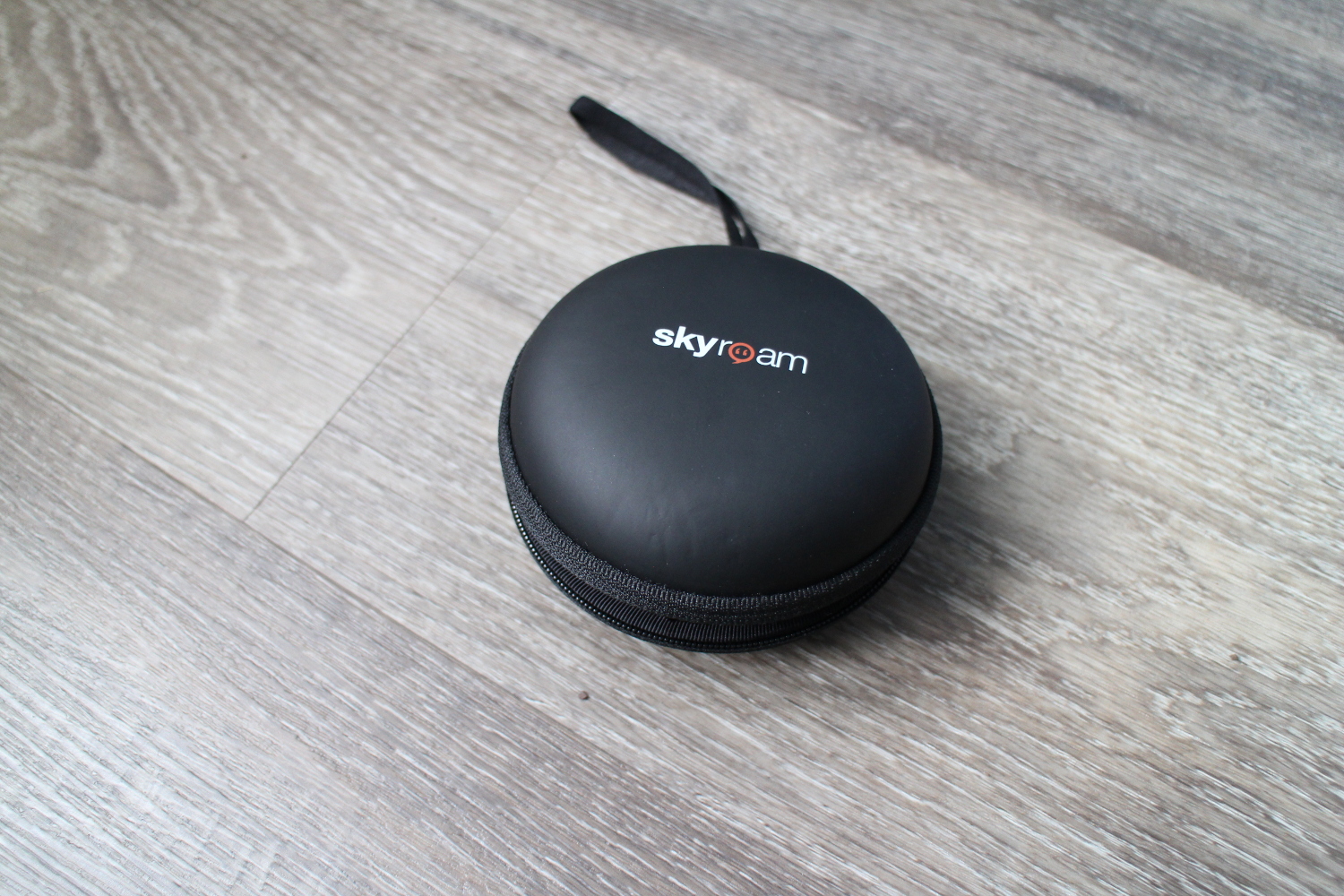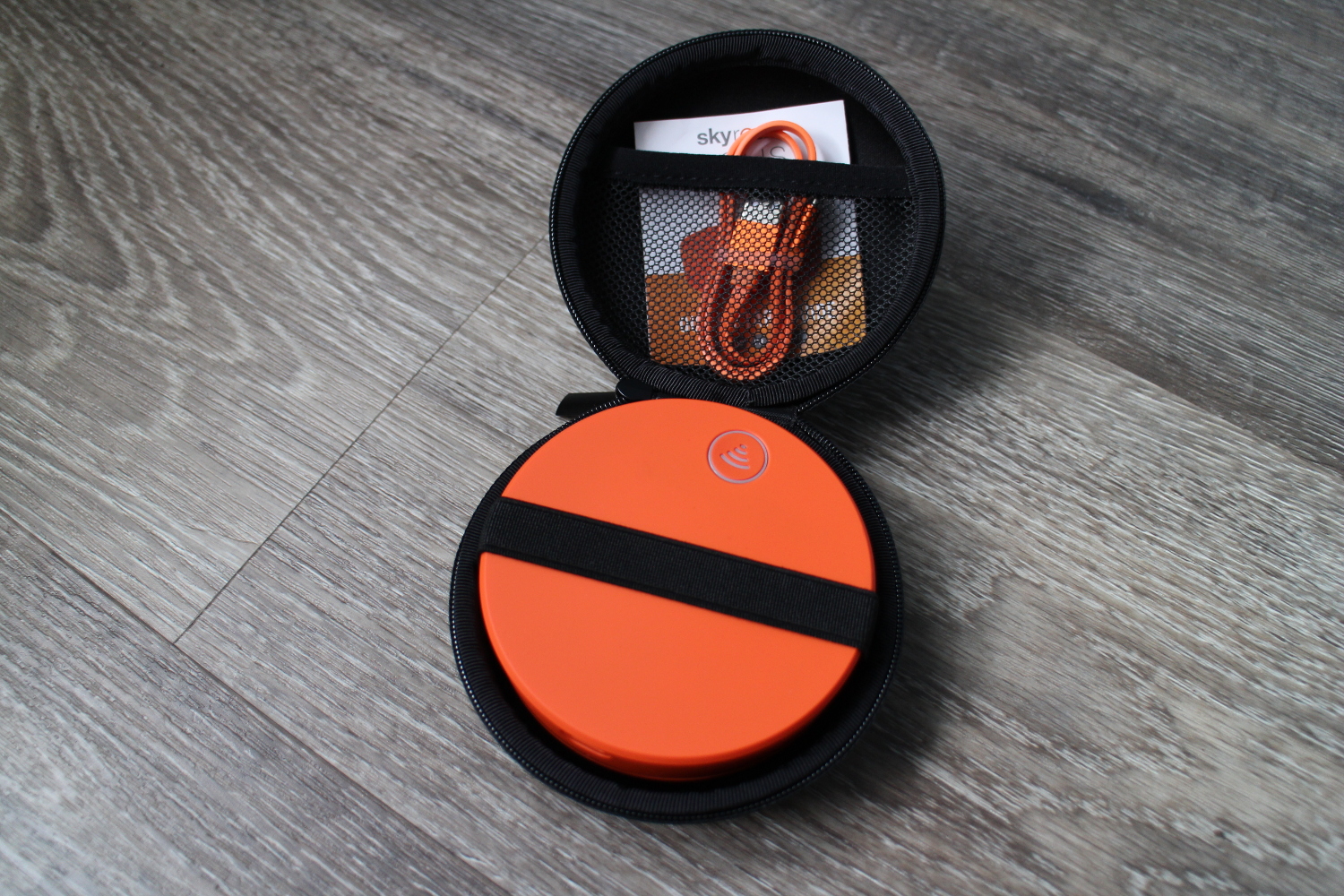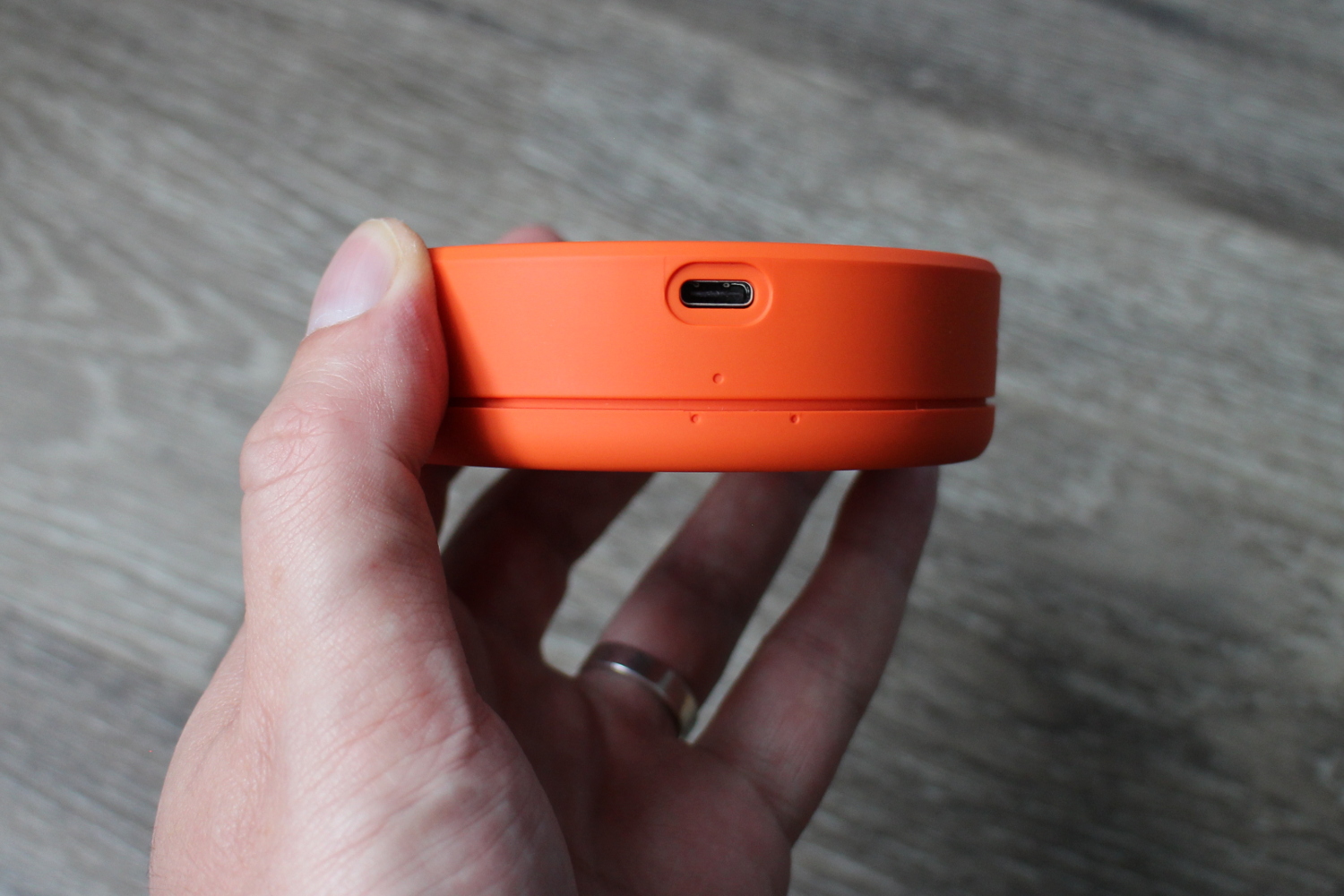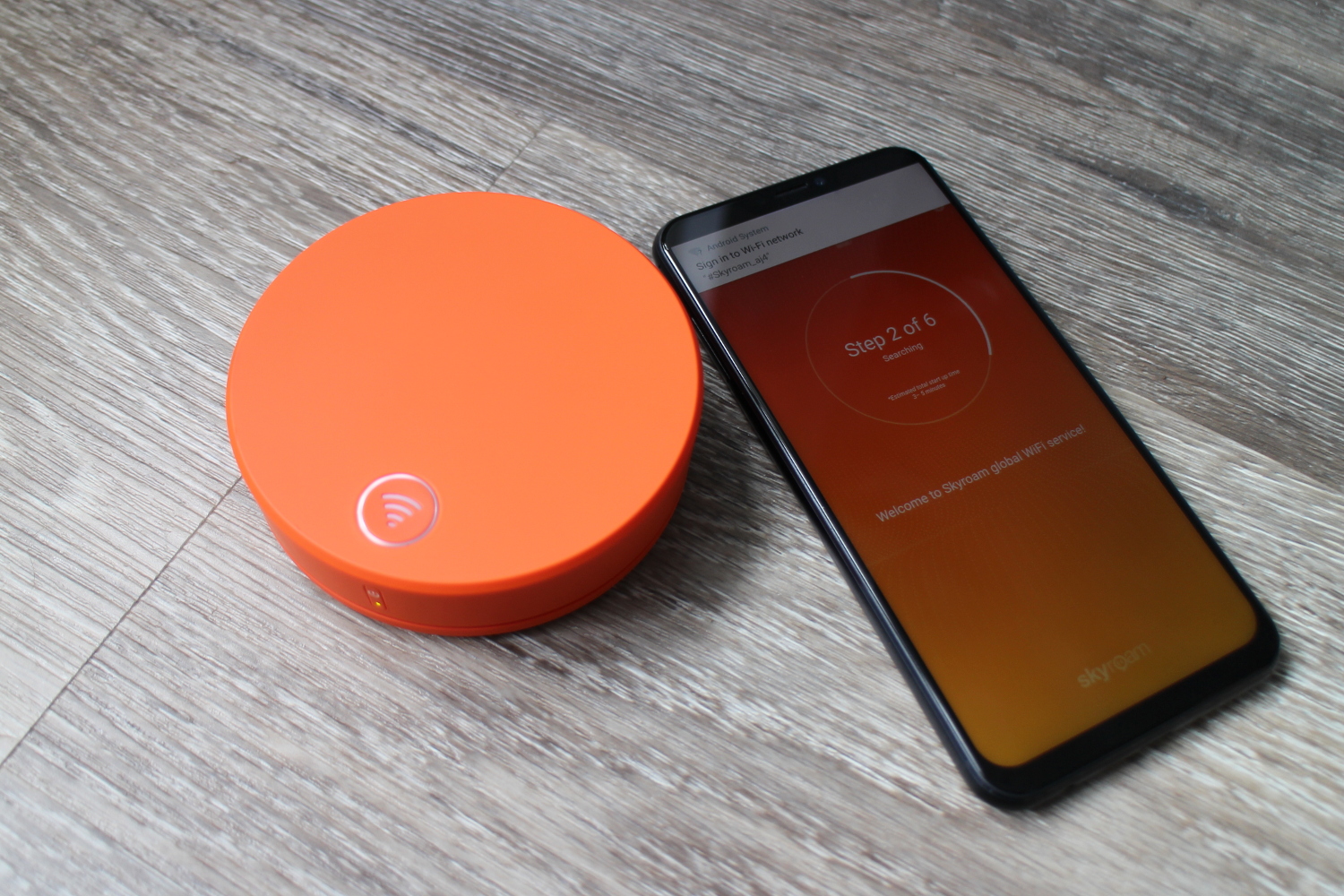Staying online when you travel is more important than ever before. Whether you want to jump into Google Maps to get directions to your next destination, pull up your boarding pass for a flight, or research a great place for dinner, you’re going to need connectivity to do it.
Hotel Wi-Fi is an unpredictable beast and international data plans can be expensive. Buying a new SIM for your destination can be a cost-effective strategy, but it means switching out your usual number because a lot of people don’t have dual SIM phones. It should be simple to stay online when you’re overseas, but sadly that’s not the case.
We’ve seen the rise of a new category of product proclaiming itself the answer to your internet-related travel woes: The global Wi-Fi hotspot. We decided to test one out on a trip to Berlin for IFA to see whether it lives up to the promise.
What is the Skyroam Solis?
The Skyroam Solis is an orange puck that’s described as a “4G LTE Global Wi-Fi Hotspot and Power Bank”. We were loaned the device, which usually costs $150 and comes with one free day pass. Ours was preloaded with ten day passes, but you’ll normally pay $9 for each day pass. There are discounts if you buy passes in bulk.
It works like the hotspot function on your smartphone, allowing you to create a private Wi-Fi network. Connection details and password are on the bottom of the puck. Each Skyroam Solis comes with its own global SIM onboard, it can connect to 4G LTE networks where available, and it will let you connect up to five devices.
Easy set up
We set it up in Edinburgh before departing and the process was easy. Hold the power button to turn it on, the white Wi-Fi button on the top will flash and then go solid white once it has connected. You can now do a Wi-Fi network search on your phone or laptop and connect to the Solis. You get a short grace period of a few minutes to configure it, before you need to activate one of your day passes.
You get a short grace period of a few minutes to configure it, before you need to activate one of your day passes.
The connection process takes a couple of minutes, but once you’ve set it up and entered network details into your devices all you need to do is turn it on and press that Wi-Fi button on the top. The day passes last for 24 hours and you can see a countdown on the network information page, along with how many devices are connected, and what mobile network it’s connected to — be it 4G, 3G, or 2G.
There’s also a big, 6,000mAh battery inside the Skyroam Solis which can be charged via the USB-C port on the back. You can even plug in a USB-C to USB adapter and use the Solis to top up your smartphone battery if it’s running low.
Offering connectivity in more than 130 countries — you can check the full list on the website — the Skyroam Solis appears to be a great device for frequent travelers.
Testing time
Soon after landing in Berlin we turned the Solis on and it connected to a 4G network offering decent speeds to two connected phones and a MacBook. Download speeds were around 5Mbps. We spent a couple of hours checking email, including some IFA-related stuff with large press release attachments, reading tech news, and browsing Twitter. Rather hopefully, we tried uploading a video file, but the upload speed was snail’s pace. Annoying, but not a big surprise.
Comparing the Solis with the hotspot function on our smartphone, the speeds were about the same. So far, so good.
You can continue to connect after the 500MB limit is exceeded, it’s just that it’s very, very slow indeed.
Then one of our colleagues arrived at the hotel, and we invited him to connect to the Solis as well, at which point the speed suddenly tanked. Web pages took several seconds to load, video wouldn’t play at all, the connection slowed enormously. Looking at the details we noticed the network connection had gone from 4G to 2G and it turns out this is because we had already exceeded the 500MB “fair use policy”.
Now the Skyroam Solis is advertised as “Unlimited” with “Blazing fast speeds” and there’s no obvious mention of any 500MB per 24-hour day pass limit. You can find it if you dig into the FAQ section, but a quick glance at some Amazon reviews reveals that we weren’t the first to be caught unawares by this.
Strictly speaking it is unlimited, because you can continue to connect after the 500MB limit is exceeded, it’s just that it’s very, very slow indeed. We continued to use the Skyroam Solis around Berlin and on the show floor at IFA. Although our 500MB limit tended to run out quickly each day, we were putting a lot of strain on it by trying to download and upload a lot of files.

The slower speed is still useful for checking email, if there are no attachments, checking social media, or browsing the web, if you’re patient and don’t mind missing out on video. The battery was big enough that it never ran out on us, but we did have to charge it up at night.
Is it worth it?
Much depends on what kind of deals your carrier offers. With EE in the U.K. you can buy 500MB of data for 24 hours for a lot of different countries for less than the price of a day pass for the Skyroam Solis. And you wouldn’t have to shell out $150 for the device itself.
If you have a good data plan, then many carriers allow you to pay a daily fee to use it as normal in foreign countries, for example, AT&T and Verizon charge $10 per day. It’s worth checking into before you spring for the Solis.
Ultimately, the Skyroam Solis works well. It’s easy to set up, you can connect multiple devices at once, and it has a big enough battery to last all day. Just be aware of the 500MB day pass barrier. If you want something that will allow you and your partner to roam a foreign city and still check directions on Google Maps, peek at social media, or browse restaurant ideas, then it will work for you. If you have visions of streaming Netflix in your hotel, then look elsewhere.

